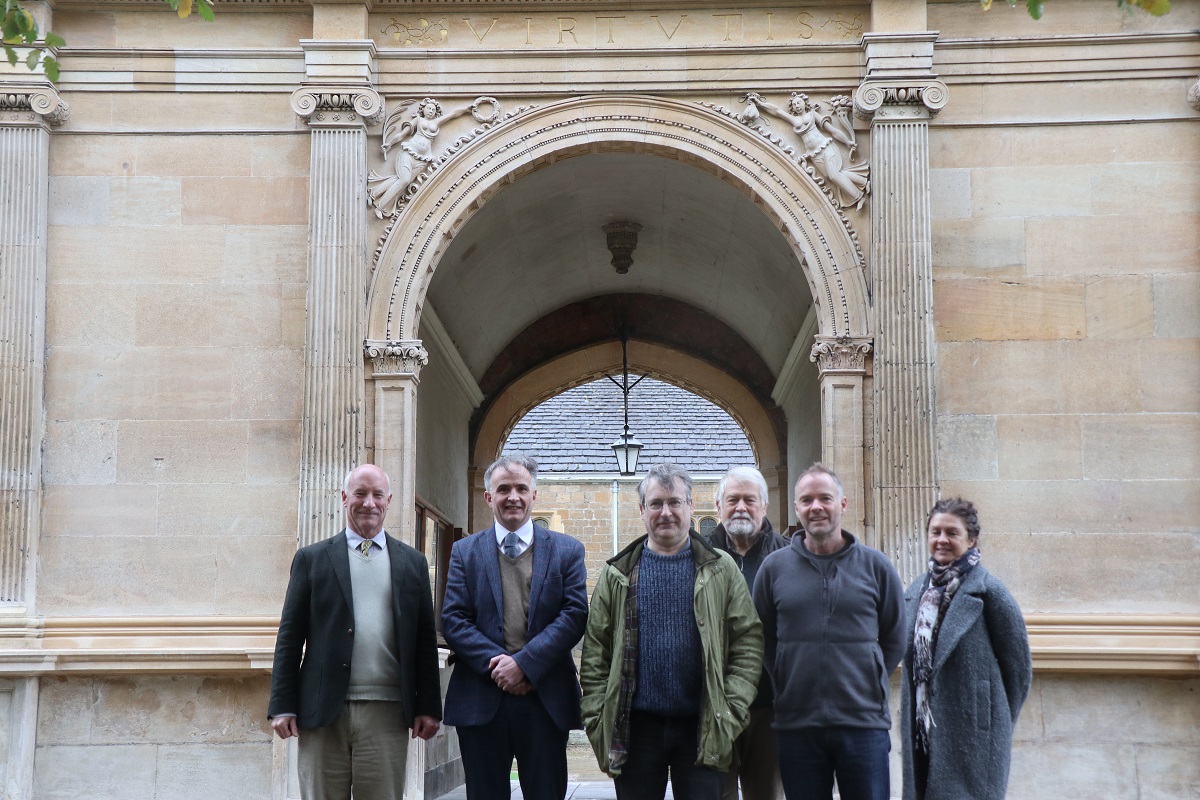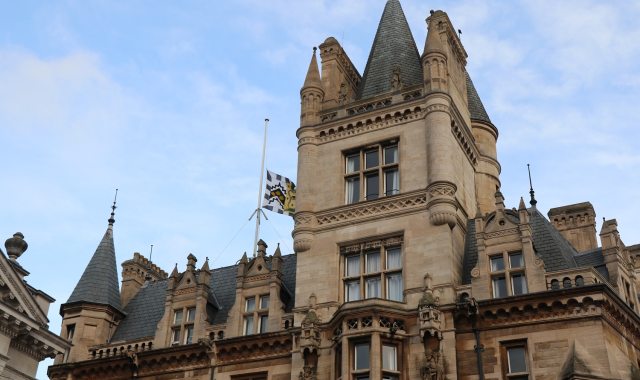Gate of Virtue restoration
- 17 November 2022
- 4 minutes
A Royal connection makes the Gate of Virtue Gonville & Caius College’s most significant architectural and heritage asset, and one which underwent forensic restoration in 2022.
The restoration has now been completed. Watch the video to find out more:
The below article appears in Once a Caian... The full magazine has been sent to alumni and is available online by clicking this sentence.
A Royal connection makes the Gate of Virtue Gonville & Caius College’s most significant architectural and heritage asset, and one which underwent forensic restoration in 2022.
Professor Paul Binski (History 1975), who retired as Director of Studies in History of Art this year after 27 years’ service, identified through research that the Gate was built in the 1560s by Humfrey Lovell, Elizabeth I’s own Master Mason, highlighting John Caius’ connections to the Royal Court and the City of London.
The three Gates of the College – of Humility, Virtue and Honour – are among the earliest Renaissance formal gateways of their type and Professor Binski recognised the need to restore the Gate of Virtue some time ago. However, projects such as this one take some time to come to fruition – and investigative work
showed the extent of the restoration required.
The £300,000 project, scheduled to finish in Autumn 2022, has benefited from the generous £250,000 gift from an anonymous donor in an example of the College’s continual gratitude to alumni.
Professor Binski added: “The Gate of Virtue is at the heart of the historic environment of Caius. The Gates are what makes Caius well known in the world of architecture, and the Gate of Virtue still preserves much of its original carved detailing which goes back to the reign of Elizabeth.
“The Gate has not been significantly conserved for many decades; some work was undertaken in the 1950s and previously the 1870s. The detailing of the Gate was in peril. The carved motifs are of great value to art historians and symbolic interest and it’s vital to preserve them, which was the aim of this project.”
The project team (from left to right): Andrew Gair (Caius), Robert Ward-Booth (Ward-Booth Partnership), Professor Paul Binski (Caius Fellow), Philip McCrone (Philip McCrone Builders Ltd), Richard McCrone (Philip McCrone Builders Ltd; St Whites Stone Ltd) and Claire McCrone (Philip McCrone Builders Ltd)
Led by Estates and Buildings Manager Andrew Gair, the project began in earnest during the Covid-19 pandemic in 2020, when initial surveys were carried out digitally and by drone. The project was advanced in collaboration with stonemason Richard McCrone of St Whites Stone Ltd, while undergraduate student Nik Yazikov (History of Art 2019) was tasked with searching the College Archives to establish what records existed of work already carried out on the Gate. Little records exist.
Hirst Conservation, and specifically Sabina van de Bruck, were then tasked with an examination of the Gate, the first in summer 2021 to head height, and then with the aid of temporary scaffolding erected in Easter Vacation 2022. This focused planning allowed the project programme to be considerably shortened and reduced the cost of a project which had a total scaffolding bill of £40,000. The two tranches of initial work showed the full scale of the problems.
“The Gate, on close inspection, was in worse condition than we could judge from the ground,” Professor Binski said.
The coal fires which historically burned throughout Cambridge, and in the College, contributed a sulphurous crust to the stonework which caused the Gate to retain moisture, Andrew explained. When this moisture froze the stonework fractured, decaying many of the decorative elements of the Gate. Large elements of the existing stonework have been weathered as well.
Some had been patched up with mortar which had to be addressed. Numerous restoration and cleaning techniques were used to remove the sulphurous crust and specialists were employed to ensure the project is completed respectfully and to the highest standard.
Andrew said: “The conservation officer and Historic England don’t normally support this level of intervention. Once they saw it from six inches away there’s no question that it should be done.
“The Gate has a whole number of different solution techniques offered. It’s extensive work. It’s not just replacing the stone that has decayed. It’s stopping the rest of the Gate decaying and dealing with the inherent problems which have built up over more than 300 years.
“It’s a massive project, and significant in a way that’s hard to quantify for the College.”



